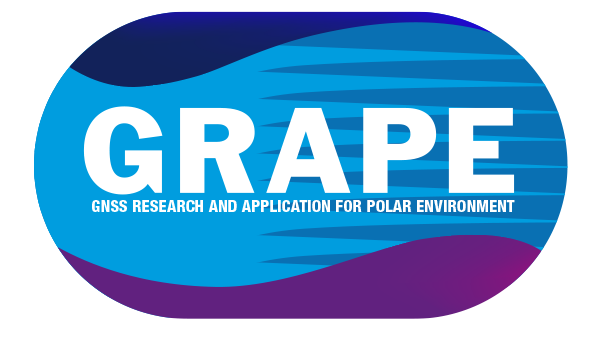Italian Institutions supporting GRAPE:
- Istituto Nazionale di Geofisica e Vulcanologia, Rome
- Istituto dei Sistemi Complessi, Sesto Fiorentino, Firenze
- IFSI-CNR, Area di ricerca di Tor Vergata, Rome
- Universita' di Modena e Reggio Emilia
- Istituto di Radioastronomia - IRA, Istituto Nazionale di Astrofisica - INAF, Bologna
- Politecnico di Torino, Torino
- Istituto Superiore Mario Boella, Torino
Observations
Istituto Nazionale di Geofisica e Vulcanologia performs:
In Antarctica:
- "Mario Zucchelli" Station, Terra Nova Bay (74.4S, 164.1E);
Measurements: Ionospheric vertical sounding, Cosmic noise for ionospheric absorption, Ionospheric scintillation;
Instrumentation: AIS-INGV ionosonde; Solid State single beam riometers at 30, 32 and 51.a MHz, GISTM GPS dual frequency receiver
- "Concordia" Station, Dome C, (75.6S, 123.2E);
Measurements: TEC and Ionospheric Scintillations measurements;
Instrumentation: GISTM GPS dual frequency receiver
In Arctic:
- "Dirigibile Italia" Station, Ny Alesund, Svalbard, Norway (78.9N, 11.9E);
Measurements: TEC and Ionospheric Scintillations measurements;
Instrumentation: GISTM GPS dual frequency receiver
Sampling time: 20ms
- Longyearbyen, Svalbard, Norway (78.17N, 15.99E);
Measurements: TEC and Ionospheric Scintillations measurements;
Instrumentation: GISTM GPS dual frequency receiver
Data collected in: http://www.eswua.ingv.it
---
Politecnico di Torino does not manage experimental infrastructures in polar region but support the Expert Group in:
GNSS Radio Occultation technique to retrieve high resolution atmospheric vertical profiles (http://projects.ismb.it/sw-rosa/).
Tomographic Technique to extract three dimensional distributions of Wet Refractivity (and water vapour) from GNSS receivers network.
Development of the Software Radio GNSS receiver (http://www.navsas.eu).
---
The IS4AC Research Unit of Istituto Superiore Mario Boella will share with other partners its know-how in the field of computing infrastructures. In particular they will support the development of a cloud computing platform for making easier elaboration and sharing of data collected by different research stations in Antarctica. The cloud platform will allow researchers to run scientific application onto elastic computing resources, through a centralized management system, and to retrieve, store and provide data through a shared repository. Benefits of these kind of solutions are:
- Elasticity - computing instances can be sized depending on application needs;
- Sharing - centralized shared repository accessible through standard protocols;
- Portability - data and application can be migrated to other cloud platforms (thanks to virtualization);
- Federation - computing resources from others research groups can be added to the platform.
